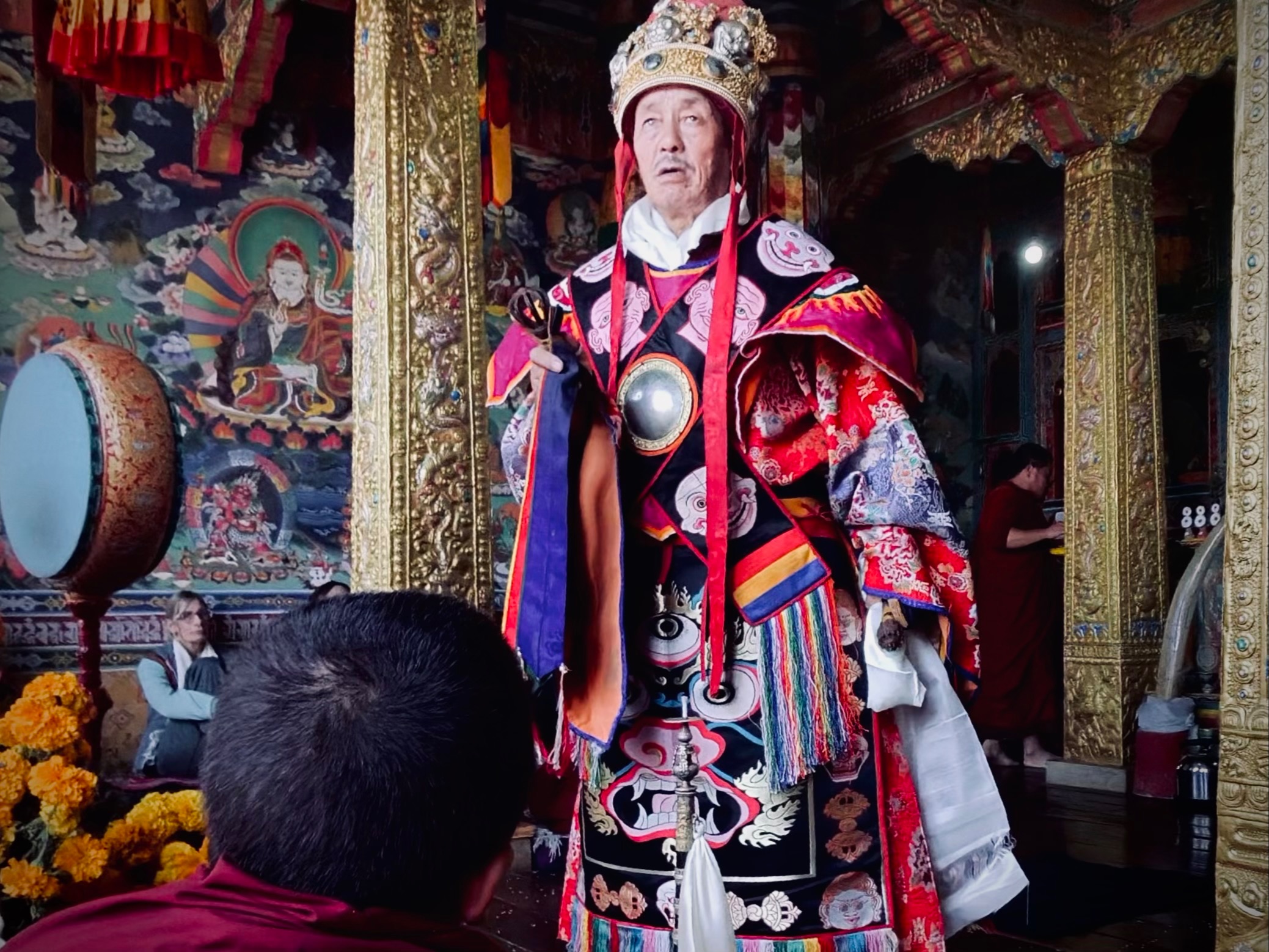
How to Work with Prophesy: Lessons from Bhutan Pilgrimage
Nov 10, 2025Preamble:
When the world feels uncertain and the headlines sound apocalyptic, it’s tempting to look for someone—or something—to tell us what happens next. But prophecy, as I learned on pilgrimage in Bhutan, isn’t about prediction. It’s an invitation to remember how our consciousness is complicit in reality-making. The oracle warned of hard years ahead, yet our teacher Geshe Tenzin Zopa reminded us that no vision of doom can outweigh the power of our own mind and actions. What follows is a story about how to work with prophecy—without fear, without denial, and with the courage to turn darkness into light.
For those who would like to watch, here is a short video (13 min), shot on location in Bhutan, where I recap the key takeaways from our pilgrimage, including how to work with prophecy.
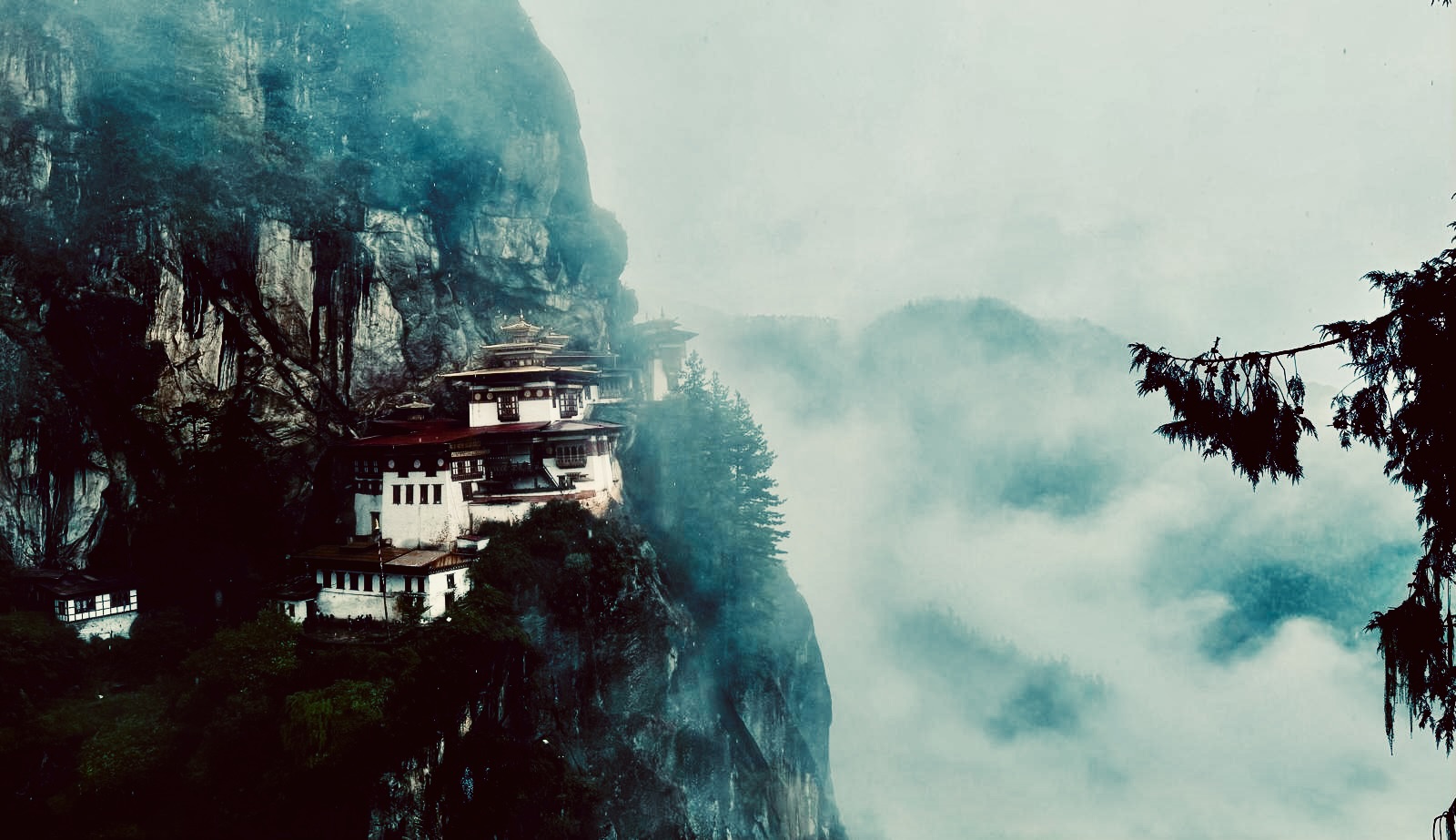
Working with Prophesy: Lessons from Bhutan
Halfway through our Bhutan pilgrimage, we found ourselves deep in a remote valley, seated cross-legged in a sunlit shrine room, sampling ceremonial sweet tea with sweet rice while waiting for something to happen that we didn’t yet understand. From the adjoining room came a sudden burst of high-pitched cries—wild, jarring, and indecipherable to our ears. Then the oracle emerged. His robes blazed with brocade and bone ornaments; a mirror gleamed at his chest; a crown upon his head indicated authority over some other domain; and one eye drifted lazily as though gazing into another world. His breath came in huffs and cries, his voice still carrying the strange proclamation of prophecy.
He had messages for several among us—one in particular for Geshe-la—and a general warning for all: the years between 2025 and 2030 would be more difficult than even the pandemic years.
I’ve spoken and written often about this very window of time. Across cultures—from First Nations elders to Hindu seers, from the Hopi mesas to Himalayan termas—prophecies converge around our era: the passage from the pandemic threshold of 2020 into a cycle of civilizational death and rebirth. The Vedic cosmology of the Yuga cycle calls it the transition from the Kali Yuga into the Dwapara Yuga, a shift some scholars, such as Bibhu Dev Mishra, date precisely to March 21, 2025. Tibetan termas—hidden teachings left by Padmasambhava and other treasure revealers for future generations—describe the decade 2024–2034 as one of wars, ecological upheaval, and moral reckoning, culminating in the Iron Dog year of 2030. Guru Rinpoche, as he is also known, left his hand- and footprints and legacy deeply engraved in the landscape of Bhutan, and it was in his tracks we walked on pilgrimage.
Yet these same prophetic texts [Download now], gathered and interpreted by Khenchen Lama Rinpoche and others, insist that destiny is not fixed. They offer possibilities—even probabilities—along with antidotes for diversions: collective acts of compassion, purification, and wisdom; the building of stupas and prayer flags to balance the energies; the recitation of Guru Rinpoche mantras day and night. No wonder the mantra was constantly on our lips and breath over the course of the two-week pilgrimage; it was sealing its way into our subtle body. Each antidote reminds us that the flood that’s coming cannot be stopped once it has begun, but we can build the embankments of consciousness before the waters rise. Mantra literally means “mind protection.”
Joseph Campbell taught that the hero’s night-sea journey is a rite of passage—a descent required for renewal. Jung saw the same motif in the psyche: to redeem the world, we must first face the shadow within it. These teachings converge on the trial of accountability and responsibility, yielding the treasure of confidence. It is our greed, distraction, and hubris that have birthed the polycrisis; therefore, it is also within our power to transmute it. The coming age—the turning from Kali to Dwapara, from the great ages of Pisces to Aquarius—if met consciously, could help us renew and align with their central energetic signatures of decentralization, discernment, dignity, and a renewed sense of interconnection.
Lesson One: Remember Your Power
No one embodied this wisdom more clearly than our teacher Geshe Tenzin Zopa. Though raised amid Himalayan superstition, he is strikingly unsuperstitious. “Be careful what stories you tell,” he cautioned after the oracle’s prediction. “Stories are powerful—they grow, take on life, and can make themselves into reality.” Traumatic stories traumatize. He was talking about a self-fulfilling prophecy born out of the mind’s natural ability to create reality. His message was not denial but discernment: prophecy becomes a curse only when we surrender our agency to it.
Geshe-la reminded us that refuge in Buddha, Dharma, and Sangha is the only real protection, not based on faith, but based on active cultivation of our own innate enlightened qualities, the methods to realize them, and fellow pilgrims for support. “If you want to know your past,” he said, quoting a common Tibetan proverb, “look at your present experience. If you want to know your future, look at your present actions.” No omen outweighs our karma. Work on your karma; change how you experience the world, even when there may be natural disasters, famines, and wars.
Geshe-la was firm: the world may worsen, but your response is always within your control. Destiny is always in our hands, not in the eyes of prophets and seers. Though our outer circumstances may darken and become more chaotic, take it as a call to “step up your commitment to practice.” Turn adversity into your advantage. Transform misfortune into meaning—that is your spiritual responsibility and path.
During the pandemic, our small global sangha—formerly the Contemplative Studies Program, now the Gradual Path—did exactly that: two hundred students who took our Lam Rim studies program online and into the cloud. Despite our lockdown isolation, we became a close-knit community, sustaining each other through uncertainty and hardship with discipline, generosity, and joy. We didn’t wither; we deepened and grew.
Lesson Two: Band Together in Dharma
Toward the end of the Bhutan pilgrimage, these teachings on fated destiny versus karmic agency became manifest. We planned to climb to Bumdrak—the “land of a hundred thousand dakinis”—a mountaintop camp at 3,900 meters nestled beneath the stars, followed by a descent at dawn to the iconic Tiger’s Nest perched on a cliff face, where the cave-dwelling yogis Padmasambhava and his consort Yeshe Tsogyal reached immortality in the 8th century. But rain began as we set out and did not stop for two days. Still, the group pressed on—seven miles of steep ascent, soaked and shivering with rapid altitude gain. That night, I checked the forecast anxiously as the storm worsened, rain pelting the roof of our tents. I worried about getting our group down safely and ruminated on all the possible things that could go wrong. Even if we aborted the mission to Tiger’s Nest, we had no way off the mountain but on foot, down rain-washed paths that could easily give way to landslides. And it was cold, so, so cold.
By morning, for the first time in remembered history, authorities had actually closed the entire mountain up to the Nest; no new pilgrims were permitted in. Unaware of this closure, we began our descent through ravines and riverbeds, sliding down mud-slick paths, slippery stones, and through the forest. We hadn’t slept well, our clothes were soaked through, and we were hungry. Daunted but undeterred, we banded together under Geshe-la’s infectious buoyancy and vision, sharing a handful of nuts, dividing up the few granola bars we had among us, and sipping the last cold tea from our thermoses left over from the previous day. It felt like Christ’s miracle dividing fish and bread among the masses—there was enough to go around for everyone.
That morning, as a kind of pep talk before we set out, Geshe-la told us the inspiring story of his two masters, who walked on foot from the Tsum Valley high in the Nepal–Tibet borderlands of the Himalayas all the way to Bodhgaya, seat of the Buddha’s enlightenment, in the Gangetic plains of northern India—a journey that took two long months. One that was especially arduous. The significance, Geshe-la said, was that because they took on hardship with their actual bodies—the contaminated aggregates of this samsaric life—with spiritual intention, so much purification was gained. They weren’t just meditating with their minds in some cave; they were purifying their very bodies through the physical challenges of pilgrimage: fatigue, hunger, pain, sleeplessness, and cold. They actually welcomed such hardships for a higher purpose. Their training was to embrace difficulties in order to expedite spiritual growth. The pilgrim’s mindset turns life’s inevitable inconveniences on their head, using emptiness to transform trial into treasure, reframing grit as growth. Because of emptiness, nothing is fixed; therefore, anything is possible with an elevated consciousness capable of seeing reality from multiple perspectives, possessing infinite possibilities.
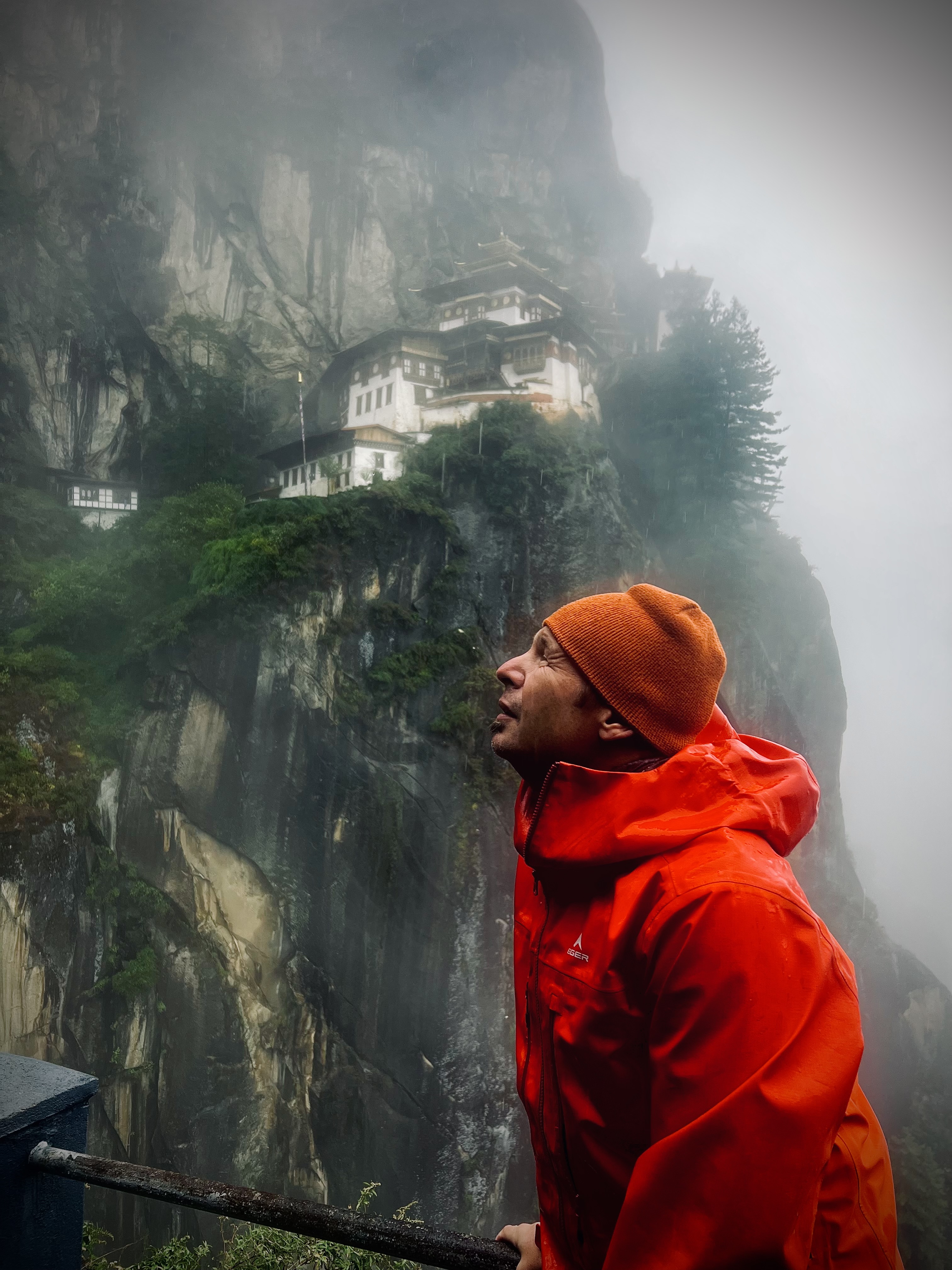
As we grew closer on our descent, the thick clouds temporarily but magically parted, like a drawn curtain, revealing a breathtaking glimpse of the iconic Tiger’s Nest in her full splendor, hugging the cliff face, perched above a dramatic drop of a deep gorge. This is where, in the 8th century, Padmasambhava and his consort Yeshe Tsogyal blissfully enjoyed the direct realization of the Great Perfection—Dzogchen, Dharmakāya, ultimate reality beyond delusion. Inside the holiest inner sanctum, Geshe-la had us prostrate and then kindly offered us the refuge ceremony and lay vows. At my request, he offers this on every pilgrimage, in the most sacred places, under the Bodhi Tree in Bodhgaya, atop the Borobudur mandala in Indonesia, at Koyasan in Japan, but this year was different. My lips were chattering; I was so cold to the bone, my feet in soaked socks were near frostbitten as many others were, and yet we were all energetically aligned on this monumental occasion. It was a hard-won refuge, and all the more meritorious, meaningful, and memorable.
Secured around my nose and mouth, I exhaled steam inside my raincoat, hoping to keep myself warm enough just to finish the ceremony. I’m not going to lie, part of me was hoping it would be over sooner, as every minute was so intense. But I was caught off guard when Geshe-la decided that we should all dedicate the merits and thank our parents—no matter how well or poorly they raised us—simply for giving us our bodies, which allow us to practice Dharma, even, and especially, within these harsh conditions. It was a call for forgiveness and gratitude all at once. Without them, no enlightenment is possible. Leaving the main temple, he quickly ushered us farther up into the quiet monastic complex to another shrine room, past wet floors and wind-whipped staircases. “Light the butter lamps,” he said. “Offer them to your parents and all living beings.” Physically, I couldn’t endure another minute, but spiritually, it was exhilarating. The Tiger’s Nest was ours alone. It was the end of a long, flawless journey; we had been given refuge by a realized master in an exalted place, and despite the harsh conditions, we all understood the victory of the moment would last us lifetimes.
Then we gathered for our final descent. We rallied what energy we had left, uplifted by the heroic refuge ceremony, and Geshe-la boundless enthusiasm. My friend Ellie gifted me a pair of warm, dry socks. Oh my gosh, the small things in life that bring true comfort—that we so often take for granted—mean so much from a clear-eyed perspective. What a metaphor for that day. We set off down the mountain and continued downward steeply for what seemed like hours, helping each other over rocks, streams, muddy patches, and steps—one mind moving through many bodies. There was not a single complaint uttered that day, not a moan or a groan. No drama. Only quiet cooperation, very intense focus, and an appreciation for the poignant blessing of the moment. It was a special, very mature group. Ellie twisted her ankle shortly after Tiger’s Nest but refused help, gliding down the slopes miraculously pain-free and unaided until she saw the waiting buses below. Only then, after allowing me to carry her bag, as if transitioning out of the dream, did the pain set in. The entire experience had been a collective alteration of consciousness. A group flow state.
Seventeen miles in two days—up to 3,900 meters and down—through storm and a historic first closure: ours was the only large group to reach Tiger’s Nest during the park’s shutdown. We were hermetically sealed in for refuge. The triumph wasn’t just physical; it was collective and spiritual. We discovered in real time what prophecy demands: courage, creativity, community, and perspective.
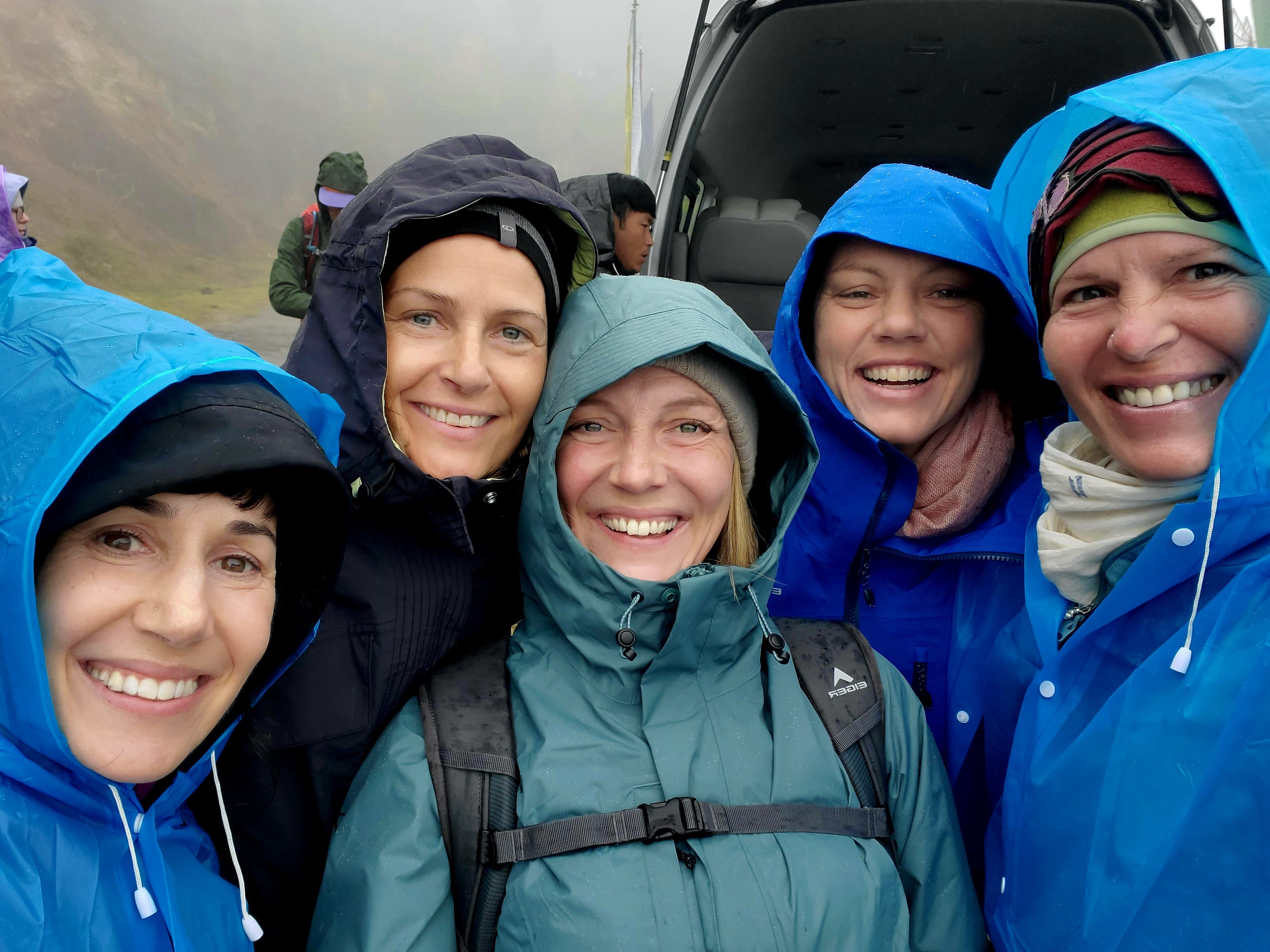
Preparing for What's to Come
Looking back, those final days of pilgrimage feel like a dress rehearsal for what’s coming our way—possibly another pandemic-level global catastrophe, more government overreach, the looming uncertainty of AI, economic collapse, and perhaps even war. The oracle’s warning, the astrology, the terma prophecies, Geshe-la’s counsel—all converge on a single truth. The world may slip into chaos, a collective dark night, but we have the power to see the belly of the whale as an initiatory crucible ideally suited to forge a higher order of being. We need visionary teachers who transmit confidence amid collapse; companions who band together and share what little resources they have; and the pilgrim’s mindset that transforms fear into clarity, self-protection into altruism, and adversity into advantage.
For those without refuge, this transformative perspective and methodology, the coming years may indeed feel like a living hell. For those who see through the creative third eye of possibilities, this could be the metaphoric post dark-night, light-renewing dawn of a wiser, more harmonious age. Where possible, we can help support the awakening of those who are receptive to change, within our sphere of influence and according to our capacity. Destiny is always in each of our hands.
For those interested in our upcoming pilgrimages in 2026, we travel to Geshe-la's home in the Nepal-Tibet borderlands of the Tsum Valley in April, to the Borobudur mandala in Java in May, across the 1,000 year-old sacred Kumano Kodo trails in the enchanted forests of Japan in October, and along with three healers from three Asian traditions en route to the oldest temple on the planet, Gobekli-teppe, in Anatolia, Turkey in November. More details for all our tours are here.
Bhutan, on a societal level, stands as living proof of collective conscious evolution—an entire nation striving to ground modern life in spiritual ethics and inner well-being, measuring success not by profit but by what it calls Gross National Happiness. This philosophy defies the amoral, dog-eat-dog competitiveness that drives most of the world, contributing to its collapse. Bhutan, on the other hand, has taken destiny into its own hands, creating something new, and now stands as a brilliant example of how consciousness and virtue, wisdom and compassion, can together forge an exceptional and sustainable quality of life—if only the rest of the world cared enough to learn from the last Tantric kingdom.
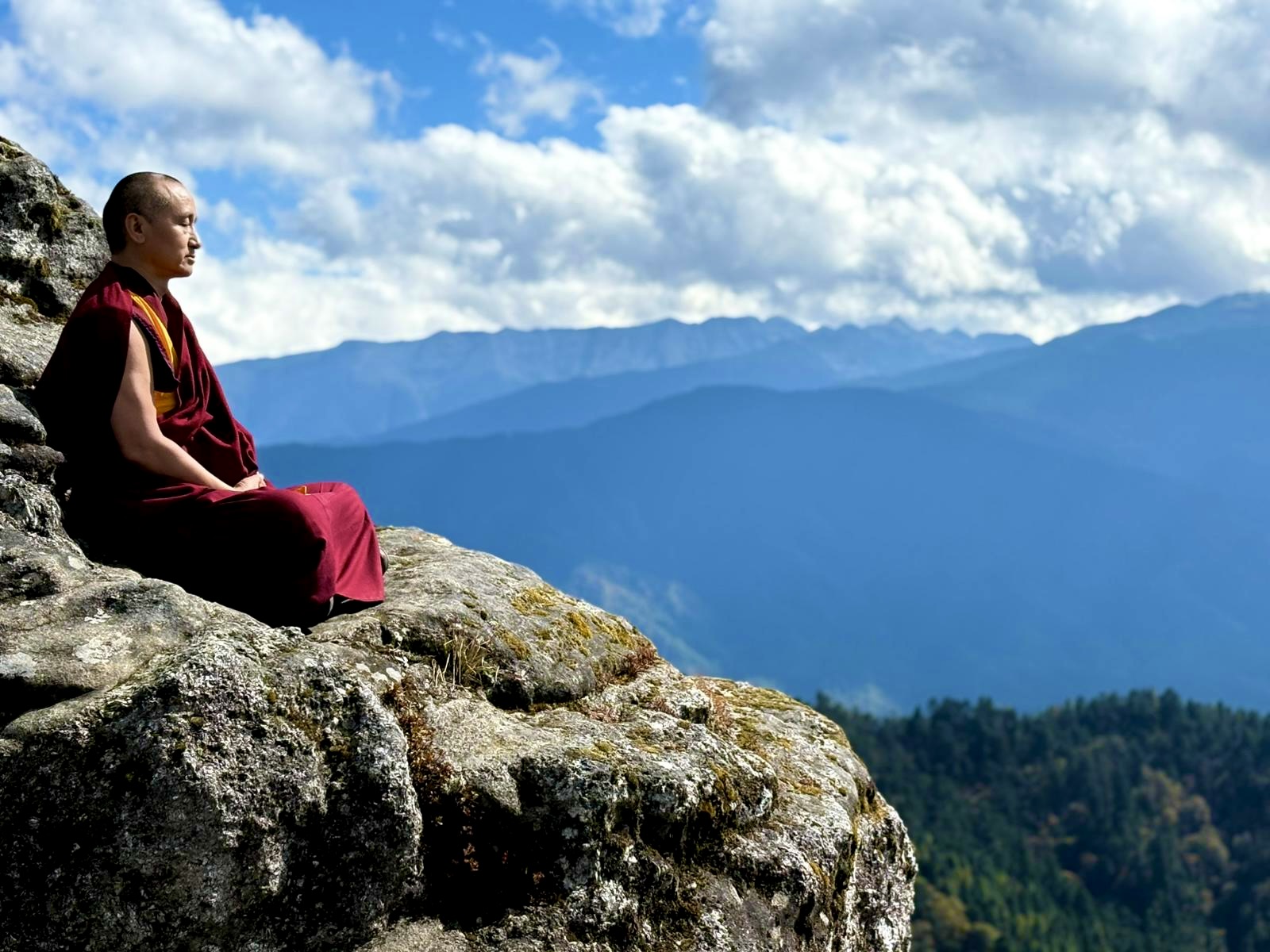
The prophecies foretold on our pilgrimage are not threats of punishment set in stone. They are fluid mirrors for our souls. Because everything is interdependent, there is always room for our involvement to bend and shape-shift reality. Prophecies offer us a warning of caution, yes, they orient us to emergent probabilities, and can show us what we must take specific responsibility for; but, from our side, we must remember our innate power, engage in purification of the unsavory aspects of our shadow, forge bonds with like-minded pilgrims, and put our innate creativity to work soul sculpting our world. Collapse and reconstruction—death and rebirth—come hand in hand. From an awakened perspective, we couldn’t be living in more extraordinary, auspicious times.
Stay connected with news and updates!
Join our mailing list to receive the latest news and updates from our team.
Don't worry, your information will not be shared.
We hate SPAM. We will never sell your information, for any reason.




